Wofür stehen die 4C bei Diamanten?
Title:
Das 4C-Qualitätssystem ist international anerkannt und ist ein Wegweiser durch die Welt der Diamanten. Es hilft, die Qualität und den Wert jedes Elements einzustufen – die 4C stehen für Farbe (color), Schliff (cut), Karat (carat) und Reinheit (clarity). Die im Labor gezüchteten Diamanten der Swarovski Created Diamonds Kollektion werden basierend auf diesem 4C-System des International Gemological Institute (IGI) evaluiert. Die für diese Kollektionen verwendeten im Labor gezüchteten Diamanten haben eine sehr hohe Qualität: G+ für die Farbe und VS+ für die Reinheit.
Prinzipien und Faktoren für Reinheit
Title:
Die Reinheit eines im Labor gezüchteten Diamanten wird basierend auf seinen kleinen Makeln bewertet, das heißt auf Einschlüssen und Schäden, die ihm seinen einzigartigen Charakter und Charme verleihen. Entdecken Sie weiter unten mehr über den Reinheitsgrad von Diamanten.
I.F.
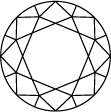
Sans défauts internes
VVS 1
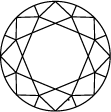
VVS 2
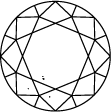
Minuscules inclusions
VS 1
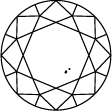
VS 2
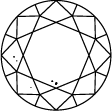
Très légères inclusions
SI 1
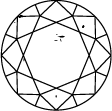
SI 2

Légères inclusions
I 1

I 2
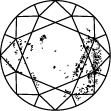
I 3
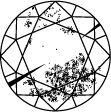
Inclusions
鑽石淨度表
Title:鑽石淨度等級
Subtitle:
鑽石淨度等級從 IF 到 I 3,是根據每顆鑽石中發現的內含物和瑕疵的數量來劃分的。鑽石淨度等級是在 10 倍放大鏡的標準觀察條件下判定的;IF 等級代表內無瑕的鑽石,而在鑽石淨度等級表的另一端,I 3 等級代表含有肉眼可見的瑕疵。真正無瑕的鑽石極為罕見,幾乎所有的鑽石都或多或少有內含物,包括培育鑽石。
切割原則和要素
Title:
培育鑽石的切割品質取決於其比例、對稱性和拋光。專業的切割工藝會創造出多個切割面,吸收並反射光線,使鑽石從各個角度都能閃閃發光。
無色

D-F
近無色
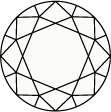
G-J
略帶色調

K-M
極淺顏色

N-R
淺色

S-Z
鑽石顏色等級圖表
鑽石顏色的等級從 D 到 Z 不等,D 級為清澈的冰白色,沒有一絲黃色,而 Z 級為黃色和棕色。圖表上的每個字母範圍表示鑽石的色調,D 到 F 級為無色,S 到 Z 級為淺黃色或棕色。Swarovski 只接受優質的培育鑽石作為其產品系列的原料,這表示我們採用的鑽石從無色到近無色 (D-G) 不等。
顏色原則和要素
Title:
無色鑽石是世界上最受歡迎的鑽石,而且極為稀有。Swarovski Created Diamonds 是根據標準的鑽石顏色等級進行評估的。

2.5 mm
0.05 CT

3.0 mm
0.10 CT

3.8 mm
0.20 CT

4.5 mm
0.30 CT

4.8 mm
0.40 CT

5.2 mm
0.50 CT

5.8 mm
0.70 CT

6.3 mm
0.90 CT

6.5 mm
1.00 CT

6.9 mm
1.25 CT

7.4 mm
1.50 CT

7.8 mm
1.75 CT

8.2 mm
2.00 CT

8.8 mm
2.50 CT

9.4 mm
3.00 CT
鑽石克拉重量
Title:培育鑽石克拉
Subtitle:
克拉 (carat) 是由「carob 」這個字演變而來,它的意思是種子,在以前的時代,商人們用這種種子當作鑽石重量的參考。克拉是衡量鑽石重量的國際標準單位。一克拉等於 200 毫克,因此 5 克拉的鑽石重量為 1 克。鑽石的克拉並不是指鑽石的大小,而是指鑽石的重量。通常克拉愈大,鑽石的價格則愈昂貴。
Discover Swarovski Created Diamonds
All About Swarovski Created Diamonds
Title:Laboratory Grown Diamonds
Subtitle:
Discover the world of Swarovski Created Diamonds jewelry, redefining the future of diamonds with exceptional collections that bridge the gap between tradition and current trends. From the otherworldly brilliance of our interstellar collection to the pure elegance of our signature pieces, find a style that will last a lifetime.
Laboratory Grown Diamonds Buying Guide
Title:Find the perfect piece
Subtitle:
A natural progression of our brand DNA, Swarovski Created Diamonds jewelry are laboratory grown diamonds, masterfully cut, intensely bright, and identical to their mined counterparts in every way but origin. Formed layer by layer from a carbon seed, they serve as a flawless reflection of nature’s radiance.
What are Laboratory Grown Diamonds?
Title:Laboratory Grown Diamonds explained
Subtitle:
Find out more about diamonds that are grown in a laboratory, and how the process of replicating the way diamonds are formed in the earth is achieved. Discover the different cuts of diamonds in the Swarovski Created Diamond Collections, as well as the inspiration behind the designs.
Frequently asked questions
Diamond 4Cs FAQs
What are the 4Cs?
Aucun diamant ne ressemble à un autre. Chaque pierre possède ses caractéristiques propres. Tout comme les diamants naturels, nos diamants créés en laboratoire sont évalués selon quatre critères appelés 4C. Reconnus dans le monde entier par l’industrie diamantaire, ces 4C interviennent dans le contrôle qualité du diamant et se réfèrent à la taille (cut), la clarté (clarity), la couleur (color) et le caratage (carat).
La clarté du diamant est-elle importante ?
Plus le degré de clarté est élevé, plus le diamant aura de la valeur, car il contiendra moins d’inclusions et d’imperfections.
Quel est le degré de clarté le plus élevé du diamant ?
La clarté dépend de la pureté de la pierre qui, elle-même, repose sur deux critères visuels : les inclusions et les imperfections.
Afin d’évaluer sa clarté, le diamant est inspecté à l’aide d’une loupe de grossissement 10x. Le nombre et la nature des éléments externes (imperfections) et internes (inclusions), ainsi que leur taille et leur position déterminent le degré de clarté.
Les pierres sont classées par les gemmologues de la meilleure note, IF (sans défaut interne), à la moins bonne, I3 (Inclusions).
Afin d’évaluer sa clarté, le diamant est inspecté à l’aide d’une loupe de grossissement 10x. Le nombre et la nature des éléments externes (imperfections) et internes (inclusions), ainsi que leur taille et leur position déterminent le degré de clarté.
Les pierres sont classées par les gemmologues de la meilleure note, IF (sans défaut interne), à la moins bonne, I3 (Inclusions).
Les diamants de laboratoire sont-ils sans défaut ?
Non, presque tous les diamants (extraits ou créés en laboratoire) contiennent des inclusions. Les inclusions métalliques ne concernent que les diamants de laboratoire. Si une trace de métal est détectée, on peut ainsi supposer qu’il s’agit d’un diamant de laboratoire. Bien que les diamants créés en laboratoire possèdent des défauts, Swarovski n’utilise que les pierres de la plus haute qualité dans ses collections Swarovski Created Diamond, certifiées par l’IGI (International Gemological Institute) et les 4C.
Les diamants de laboratoire peuvent-ils perdre leur éclat ?
Non, les diamants de laboratoire ne perdent rien de leur éclat avec le temps. Strictement identiques aux diamants naturels, ils sont dotés des mêmes caractéristiques physiques et chimiques. Leur apparence ne s’altère pas avec le temps. Lorsque le grain de carbone utilisé est de qualité inférieure, certains diamants peuvent contenir des défauts apparents, comme des problèmes de tonalités, des impuretés ou des altérations. Les bijoux Swarovski Created Diamonds ne contiennent aucun diamant aux défauts artificiels.
Comment se passe la certification et l’évaluation des diamants créés en laboratoire ?
Les diamants de laboratoire servant à la création des bijoux Swarovski Created Diamonds sont sélectionnés à la main et examinés par des experts gemmologues qui s’assurent de leur conformité aux normes de la plus haute qualité. Chaque pièce des collections Galaxy et Eternity est accompagnée d’un certificat numérique émis par l’IGI (International Gemological Institute).
Qu’appelle-t-on facette du diamant ?
Les facettes représentent les surfaces planes qui créent la forme du diamant. Chacun se dote de multiples facettes capables d’absorber et de refléter la lumière.
De quelle manière définit-on la qualité de la taille ?
Lorsqu’on parle de taille, on pense souvent à la silhouette de la pierre (ronde, cœur, ovale, marquise ou poire), alors qu’elle fait référence à la façon dont ses facettes interagissent avec la lumière. En réalité, la taille correspond à la mesure de la qualité des proportions géométriques, de la forme et de la finition du diamant. Les brillants seront notés sur une échelle allant de Idéal à Médiocre. Swarovski ne fait aucun compromis sur la qualité de la taille pour que chaque diamant créé en laboratoire diffuse un maximum de lumière et d’éclat.
Quelle est la meilleure taille de diamant ?
La taille fait référence aux différentes manières dont les facettes interagissent avec la lumière pour révéler le feu intérieur du diamant. C’est elle qui confère au diamant sa personnalité, tandis que l’attention apportée aux proportions, à la symétrie et aux facettes de nos Swarovski Created Diamonds sublimera leur brillance. La taille parfaite offre le juste équilibre entre largeur et profondeur, pour créer une symétrie : ni trop plat, ni trop profond. L’objectif étant de créer le point de réfraction parfait pour que la lumière circule à l’intérieur du diamant et soit réfléchie tout en mettant en valeur son éclat.
Comment déterminer la couleur d’un diamant ?
Color refers to the natural tint inherent in white diamonds. The industry standard for grading color is to evaluate each diamond against a master set then assign a letter grade from D (colorless) to Z (light yellow).
The closer the diamond is to being colorless, the higher its quality.
The closer the diamond is to being colorless, the higher its quality.
Do laboratory created diamonds have blemishes?
Where poor quality diamond seeds have been used, some laboratory-grown diamonds contain obvious defects, such as color tinges from impurities or structural imperfections. Swarovski does not sell laboratory grown diamonds with unnatural, problematic characteristics.
What is diamond carat weight?
A carat is a unit of weight used specifically to measure precious stones including laboratory grown diamonds. A diamond may have a higher carat weight without appearing larger, and two diamonds of the same carat weight can vary in size if one is cut deeper than the other. One carat weighs 1/5 of a gram and is divided into 100 points.
What is the carat weight of a diamond, how is it measured and how important is it?
Carat weight it the standard weight unit for diamonds, and the first step in the grading process. Diamond carat weight is the measurement of how much the diamond weighs. Each carat can be subdivided into 100 “points.” This allows precise measurements to the hundredth decimal place. The weight of a diamond smaller than one carat may be described by its “points” alone. The larger the diamond is, the more carats it will be, but only you can decide how important that is to you.
Is it better to have a higher carat diamond?
This is an entirely personal question. If you are looking for a larger diamond, you should look for a higher carat, as this indicates the weight and therefore the size of the diamond.






